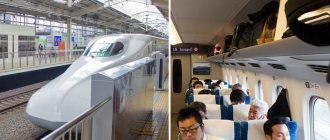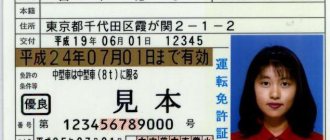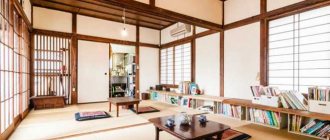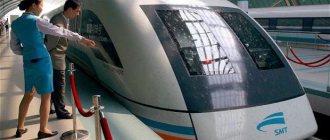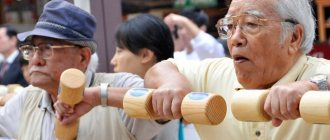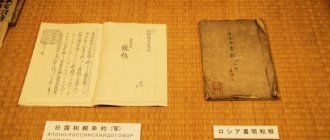What is JR Pass
The JR Pass is a joint offer from 6 companies included in the Japan Railways Group (JR Group), considered the most profitable way to travel around Japan.
By purchasing it, you get the opportunity to use almost all transport included in the JR network for FREE during its validity period. If you buy it outside of Japan, it costs less than if you buy it in the country itself. It has some restrictions on its use (for example, the Nozomi and Mizuho shinkansen), but there are not many of them, and there is always a suitable alternative.
Saving on communications in Japan
Compared to Russian prices, communications in Japan are very expensive. Wi-Fi with open access is not available everywhere; most of such points are in establishments of European and American networks.
Travelers in Japan are advised to buy local SIM cards. You cannot call them (only via the Internet). The prices are impressive: for a tariff with 5 GB of traffic you will have to pay 2,600 rubles. You can buy such tourist SIM cards from vending machines at the airport. There is no point in choosing between operators: the cost of communication services is not very different between them.
Is it profitable to buy a JR Pass?
There is only one answer - YES! For example, below is a table for calculating the cost when traveling along a standard route for 7 days.
Route: Narita airport – Tokyo – Kyoto – Tokyo – Narita airport
| Moving | Fare |
| airport Narita – Tokyo (Narita Express) | 3 020 ¥ |
| Tokyo (3 days), Yamanote Line | 2 800 ¥ |
| Tokyo - Kyoto Shinkansen | 13 600 ¥ |
| Kyoto (3 days), travel to the suburbs | 2 400 ¥ |
| Kyoto - Tokyo Shinkansen | 13 600 ¥ |
| Tokyo - Narita Airport (Narita Express) | 3 020 ¥ |
| Total: 7-day pass: | 38 440 ¥ 29 650 ¥ |
| Saving: | 8 790 ¥ (~ 5.7 thousand rubles) |
Conditions for purchasing a JR Pass
The Japan Rail Pass is available ONLY to TOURISTS temporarily visiting Japan.
To purchase, the tourist must meet the following two conditions:
- Your passport is marked “Temporary visitor.” This status is issued to those entering Japan for a period of 15 to 90 days, for sightseeing, tourism, etc. The mark is affixed by a border control officer. When passing through automatic gates, no mark is placed. And without it you will not be given a travel pass.
NOTE! If you are entering Japan under any status other than “Temporary visitor” (for example, “Trainee,” “Entertainer,” “Reentry Permit,”), then even having an exchange voucher will not allow you to get a pass. - You are Japanese and have been living outside Japan for a long time.
If you do not meet any of the above two conditions, then purchasing a travel pass is impossible for you.
Types of JR Pass and their costs
There are two types of passes:
- Green (for luxury carriages)
- Ordinary (regular carriages).
For children from 6 to 11 years old (inclusive) there is a special Children's JR Pass at a reduced price. Travel is free for children under 6 years of age.
All passes can be purchased for a period of 7, 14 and 21 days.
Cost of the pass when purchased outside of Japan (in yen, as of 2020)
| Type: | Green | Ordinary | ||
| Term | Adult | Children's | Adult | Children's |
| 7 days | 39,600 | 19,800 | 29,650 | 14,820 |
| 14 days | 64,120 | 32,060 | 47,250 | 23,620 |
| 21 day | 83,390 | 41,690 | 60,450 | 30,220 |
Order JR Pass
- To purchase a travel pass, just click on the “Order JR Pass” button and fill out the required fields in the form. Next, managers will contact you and help with further registration. No payments will be made in advance until full confirmation.
- The cost in rubles is recalculated at the yen exchange rate on the day of purchase. It may differ from the current rate in Japan.
What trains and other transport are included in the JR Pass:
| Trains |
Line map Shinkansen map (in development) |
| Buses |
|
| Ferry |
|
Order JR Pass
Where it doesn't work
- The JR Pass is not valid for any seats (reserved/non-reserved) on NOZOMI and MIZUHO trains on the Tokaido, Sanyo and Kyushu Shinkansen Lines. Pass holders are advised to use HIKARI, SAKURA, KODAMA or TSUBAME trains. Travel to "NOZOMI" or "MIZUHO" will be paid, with payment of the base cost and service fees.
- In GranClass cars on the Tōhoku Shinkansen, Hokkaido Shinkansen, Jōetsu Shinkansen and Hokuriku Shinkansen lines. You will need to pay an express fee and pay a surcharge for GranClass.
- When traveling on a JR train on private lines. You will need to pay a fee for the section of track that runs along this line. This happens on some JR trains.
JR trains running on private lines
| Train | Main route | Section with additional payment | Which company owns |
| Shirayuki | Niigata – Joetsumyoukou/Arai | Naoetsu – Joetsumyoko/Arai | Echigo TOKImeki Railway |
| Nikko | Shinjuku – Tobu Nikko | Kurihashi – Tobu Nikko | Tobu Railway |
| Kinugawa, Spacia Kinugawa | Shinjuku – Kinugawa Onsen | Kurihashi – Kinugawa Onsen | |
| Odoriko, Super View Odoriko | Shinjuku/Tokyo – Izukyu-Shimoda | Ito–Izukyu-Shimoda | Izukyu |
| Odoriko | Tokyo–Shuzenji | Mishima – Shuzenji | Izuhakone Railway |
| FUJI EXCURSION | Shinjuku – Kawaguchiko | Ōtsuki–Kawaguchiko | Fujikyu Railway |
| Mt. Fuji | Gotemba – (Odakyu) Shinjuku | Matsuda – (Odakyu) Shinjuku | Odakyu Electric Railway |
| (Wide View) Nanki | Nagoya–Shingu | Kawarada – Tsu | Ise Tetsudo Railway |
| Rapid "Mie" | Nagoya–Toba | ||
| Hashidate, Tango Relay | Kyoto – Amanohashidate/Toyooka | Fukuchiyama – Toyooka | Kyoto Tango Railway |
| Kounotori | Shin-Osaka – Amanohashidate | ||
| Super Hakuto | Kyoto–Tottori/Kurayoshi | Kamigori – Chizu | Chizu Express |
| Super Inaba | Okayama – Tottori | ||
| Nanpu, Shimanto, Ashizuri | Okayama/Takamatsu/Kochi – Nakamura/Sukumo | Kubokawa–Nakamura/Sukumo | Tosa Kuroshio Railway |
Subway in Tokyo: how not to get lost in the underground city
What associations do you have when you think about the Japanese subway? Before the trip, I imagined it like this.
Thousands of people merge into a common stream. There is chaos all around. People do not fit into the carriages, so special employees push them into the carriages. Scream. The noise of a departing train. Which station do you get off at? Can not understand anything! The signs are all hieroglyphs...
If your ideas about the Japanese subway are like mine, then relax. It's not that scary. In this text I will tell you how to use the Japanese subway using the example of the Tokyo subway.
I want to go to Tokyo!
To get from point A to point B, you need to take 7-8 simple steps, depending on whether you need a transfer or not.
1. Find the desired entrance to the metro station. 2. Buy a ticket from a machine or ticket office. 3. Go through the turnstile. 4. Choose the right direction. 5. Get off at the correct station. 6. Make a transplant and repeat steps 4-5. 7. Go through the turnstile. 8. Find the right exit to the city.
Everything is simple and clear. In any subway we perform a similar sequence of actions, but Japan has its own specifics. Let's figure it out.
How to find the correct entrance to a metro station
We lived next to Shinjuku Station, the most popular in the world according to the Guinness Book of Records. Every day it receives more than 3 million people. A huge transport hub: 36 platforms and 200 exits to the city. Diving under the first sign and immediately buying a ticket is a mistake that will waste time.
At the stage of getting to know the city, the first thing you need to do is find the entrance that leads to your station. This is not about descending into the subway from the street, but about entering a specific station. There are turnstiles, and above them there is a sign in Japanese and English. The pointer is either highlighted with the color assigned to this line, or it has an icon of your line with an arrow pointer. Why is it important to find your entrance?
1. Near the entrance to the station there are machines where you can buy tickets. The terminals on different branches are very similar. In the bustle, you can get confused and buy the wrong ticket. Once I did just that, I had to go to the person on duty at the entrance and explain the situation. Fortunately, there were no problems with getting the money back.
2. Stations of different lines are naturally interconnected, but it is much more convenient to immediately approach the desired entrance than to enter through another station and make your way to the desired platform.
How to buy tickets from a machine
Tickets for the metro and JR trains are sold at ticket offices and ticket machines. The machines are faster and more convenient and are located right in front of the turnstiles. Above them hangs a metro map with prices, most often duplicated in English. If the required stop is not on the map, then on the information board at the side of the terminal there will be a complete list of stations with fares.
The red mark on the map is the station where you are now. Find your destination. There will be two numbers next to it. Large black - regular ticket price. Small colored one - preferential price. Remember the black number and go to the machine.
1. Click the English button. 2. Select Ticket. 3. Find and press the price button that matches the black number on the card. 4. Deposit money. Banknotes and change from 10 yen are acceptable. 5. Collect your ticket and change.
Be sure to keep your ticket until the end of your trip, as the turnstile will take it back at the exit.
What happens if you buy the wrong ticket?
It's OK. The turnstile will not let you through either at the entrance or exit from the metro. There is no need to be afraid of this. There is always an English-speaking employee on duty near the turnstiles; you can approach him and explain the situation. I said something like this:
“Good afternoon, we wanted to travel from station X to station Y. We bought this ticket, but there was a problem. Tell me what to do?”
The employee will either ask you to pay the difference, or return the money and show you how to buy it correctly, or maybe just skip it. This also happened. If you don’t want to communicate with the person on duty, then there will be terminals nearby for automatic additional payment. You need to insert a ticket into the terminal and it will show how much you need to add.
Important point. Since you are buying a ticket with a view to a specific station, be careful in adjusting your plans. If you suddenly decide to travel one stop more, then at the exit you may be asked to pay the difference in ticket prices.
What's the fare
The Tokyo metro has two competing systems:
- Tokyo Metro - 9 lines that were privatized in 2004;
- Toei Subway - 4 lines, which are maintained at the expense of the city budget.
In addition, the city has several more monorail lines and JR trains - an analogue of our electric trains.
Fares vary between systems, but usually depend on the distance between your station and your final stop. There are several intervals. Here is an example of gradation for the Tokyo subway.
- 1–6 km. – 170 yen (86 rubles);
- 7–11 km. – 200 yen (101 rubles);
- 12–19 km. – 240 yen (121 rubles);
- 20–27 km. – 280 yen (141 rubles);
- 28–40 km. – 310 yen (157 rubles).
Each railway system has its own passes. They can be used in different conditions and with different benefits for the owner. On our trip, we only made 2-3 trips on the metro and often moved from city to city by bus, so buying travel passes turned out to be unprofitable.
We could only use Coupon Tickets - wholesale ticket purchases. For example, 14 pieces for the price of 10. This option is suitable for large companies, and there were six of us, but we did not know about this option.
It is best to read about travel cards on the official websites of railway systems right before your trip.
How to navigate the metro
Tokyo Station, It consists of the letter assigned to the line and the serial number of the station. Examples: C12, M14, E25.
Signs work the same as in any other subway. When searching for a platform, it is important to pay attention to the color of the line and the direction indicated on the sign. For these purposes, it’s good to have a metro map on hand or on your phone so you don’t have to constantly run to information stands.
The main difficulty for a tourist is to get on the right train. They differ from each other in that high-speed trains pass through small stations without stopping. The type of train can be determined by the data on the electronic display, the plate on the first car and the inscriptions on the remaining cars.
You can find out the route using the diagram located on the platform. Train types are assigned a specific color. The diagram shows several colored lines that pass through all stations on the line. If a circle is drawn near a station, then a train of this type stops there. If not, he drives by.
Boarding the carriage is an organized process. At least during those hours when the metro is not crowded. There are signs on the platform where the doors will be. People line up in neat queues and calmly let passengers out of the carriage, after which they board themselves. Quiet and no fuss.
In the carriage The main task of the tourist at this stage is not to miss his station. To do this, you need to follow the route so that if something happens, you get out on time. You can use different sources of information:
1. Announcements. They are dubbed in English. The station of arrival and the next one in the direction of travel is called.
2. Electronic display or interactive map. They display up-to-date information about the trip and the next stations.
3. Map. There is usually a line diagram hanging above the door. You can view the entire map at the stations or look for it in the carriage.
4. Signs at stations. When you pass the platform, the sign says not only the name of the station, but also those that came before and will come after it.
One time I was driving towards Ginza, but missed the train. Got on the expressway. He passed my station safely and had to get off at the next one. There was a surprise waiting for me there. You can't just switch to another platform. You have to go out into the city and pay again or talk to the duty officer so that you can let him through just like that. I preferred to walk to my destination. Lost 30 minutes. This system is not available at all stations, but keep it in mind.
Interesting observations
- It is not customary to give up your seat. Be prepared for the fact that your kindness will not be understood or appreciated.
- During peak hours, when the metro is operating at maximum capacity, trains are allocated one carriage only for women. It says “Women only” on it.
- You can move from one carriage to another. This is fine. The doors are not locked.
- During a stop, the driver leans out of the cab and monitors the landing. When everyone has entered the carriage, he closes the doors and starts the engine.
- Every metro station has a free and clean public toilet. Lots of vending machines with drinks and snacks.
- There are usually several exits to the city. They are numbered. In order not to miss, it is better to study the map, which is located immediately behind the turnstiles.
That's all. If you have conquered the subway in Tokyo, then the subways in other cities in Japan will seem very simple and intuitive to you. Good luck!
Available wagon types
Most JR trains are equipped with standard (ordinary) cars, and on long-distance lines there are also luxury (Green) cars.
Green Jr Pass holders can travel in any type of carriage (except for some exceptions) without additional payment. With the Ordinary Jr Pass, you will only have access to standard carriages; you will have to pay extra for an upgraded class.
| Train | Car Type | Green JR Pass | Ordinary JR Pass |
| “NOZOMI” and “MIZUHO” trains on the Tokaido, Sanyo and Kyushu Shinkansen lines *1 | Green Car | × | × |
| Ordinary Car | × | × | |
| “HIKARI,” “SAKURA,” “KODAMA” and “TSUBAME” trains on the Tokaido, Sanyo and Kyushu Shinkansen lines. As well as any trains on the Tohoku, Yamagata, Akita, Hokkaido, Joetsu and Hokuriku Shinkansen lines. | GranClass *4 | ★ | ★ |
| Green Car | ●*2 | ★ | |
| Ordinary Car | ● | ● | |
| Ordinary private Compartment | ★ | ★ | |
| Regular and limited express | Green Car | ●*3 | ★ |
| Ordinary Car | ● | ● | |
| Green private Compartment | ★ | ★ | |
| Ordinary private Compartment | ★ | ★ | |
| Sleeping Car | ★ | ★ | |
| Local and fast trains | Green Car | ● | ★ |
| Ordinary Car | ● | ● | |
| “Home Liner” trains and other types of “Liner” | Ordinary and Green Car | ★ | ★ |
Designations: ★ – When using these cars, you will have to pay extra ● – You can use them without extra payment
| |||
*1 - JR Pass is not valid for any type of carriage on the Nozomi and Mizuho Shinkansen *2 - On the Sanyo Shinkansen (Shin-Osaka ~ Hakata), most HIKARI and KODAMA trains do not have luxury cars (Green ). And also on the “SAKURA” and “TSUBAME” shinkansen with 800 series trains, Kyushu Shinkansen line. *3 – For “DX Green” seats (on JR Kyushu lines), you must pay a service fee and pay a surcharge for “DX Green”. (DX – Deluxe) *4 – In “GranClass” class carriages, the pass covers only the basic fare. You must pay a service fee and a surcharge for “GranClass” Odoriko”)
Order JR Pass
Shinkansen
Japan's main islands of Honshu and Kyushu are served by a network of high-speed train lines that connect Tokyo to Japan's main cities. Japan's bullet trains (bullet trains) are called Shinkansen (新幹線) and are operated by Japan Railways (JR).
Shinkansen, reaching speeds of up to 300 km/h, is known for accuracy, comfort, safety, and efficiency. With the Japan JRPass, you can reduce the cost of traveling around Japan. In addition to the Shinkansen high-speed trains, Japan also has night trains.
The Shinkansen offers two classes of seats: regular class and first class.
In ordinary class, dimensions and legroom vary depending on the train. Generally, the seats are comfortable and offer adequate legroom. Typically the seats are arranged in rows with 2 or 3 seats.
First class seats can be compared to business class seats on airplanes, which are more comfortable than regular seats and offer more legroom. The seats are arranged in rows with 2, 2 seats. First class carriages are generally less crowded than regular ones.
Cars with and without reserved seats (reserved and non -reserved ).
Most Shinkansen trains offer both unreserved seat (自由席, jiyūseki) and reserved seat (指定席, shiteiseki) tickets. Only the Hayabusa, Hayate and Komachi trains of the Tohoku Shinkansen do not have unreserved seat cars. On the carriages, information is given in two languages (Japanese, English) whether the carriage has reserved or unreserved seats. The price varies by 1000 yen. Japan Pass holders can reserve their seats free of charge. But it is worth considering that the Japan JR Pass does not apply to the Nozomi and Mizuho trains. For a more comfortable trip around Japan, it is better to make reservations in advance if you have a Japan travel pass or purchase one for those who do not use a travel pass.
Where are Shinkansen tickets sold?
You can purchase tickets for the high-speed train at the main stations throughout Japan at the ticket office or at the machine (there is a menu in English). When purchasing a ticket for a high-speed train, the following information is required: number of travelers, travel dates, departure station, arrival station, ordinary car (ordinary) or first class car (greencar), with or without seats (reserved/non-reserved seat). Before purchasing a ticket, it is better to write this information on paper. Only a few workers speak English.
How to use the high-speed train:
Purchasing tickets for a high-speed train (this can be done either in advance or on the day of departure, but it is worth considering that the busiest days are the May holidays, Obon (July 12-17) and the New Year holidays.
This is what the board looks like, showing where the cash registers are located:
Next you need to go through the turnstile: the ticket is inserted and collected at the other end of the turnstile. Sometimes access to a station may be through two turnstiles: entry to the station and to long-distance trains. Holders of the Japan Pass show the pass to the station employee.
Finding the correct platform is quite simple: your ticket shows the departure time and the name of the train with a number. For example, on this ticket: Hikari 468, car 7, seat 3-A, departure from Kyoto at 10:56, arrival in Tokyo at 13:40.
On the board you need to find your carriage number and platform, then go to the desired platform (Traks のりば).
Upon arrival at the platform, find the desired carriage. The boards on the platform show information about upcoming trips. Other displays indicate information about the location of the entrance to the car, indicating the car number. Passengers line up, especially near carriages without seats.
On high-speed trains, information about upcoming stations is given in several languages, including illuminated displays. Most trains offer a service for selling ready-made meals - bento, snacks, and soft drinks. All shinkansen are equipped with several toilets, which are sometimes separated by gender. According to the rules for using the Shinkansen, no more than two pieces of luggage are allowed, with no more than 30 kg of one piece of luggage. We recommend that travelers with a lot of luggage consider using a luggage transfer service (luggage transfer from a hotel in Tokyo to a hotel in Kyoto) to make the trip more comfortable for themselves and passengers around them.
Regulations for using JR Pass
- The JAPAN RAIL PASS is only valid for the person whose name appears on the ticket and must have the “Temporary Visitor” stamp on their passport. Please also note that the pass is only valid if it has a JAPAN RAIL PASS attached to it.
- When using a travel card, you will have to, unlike other passengers, go through the first turnstile or controller booth. Show the JR Pass to the station employee so that its expiration date is visible. Sometimes they may take it to mark it.
- To use the JR Pass, you must have your passport with you in order to show it to the station employee or conductor upon request to verify the identity of the pass.
- The JAPAN RAIL PASS can be used to travel in reserved and non-reserved seats on all JR Shinkansen (except “NOZOMI” and “MIZUHO”), local trains, rapid trains and local trains.
- The JR Pass itself does not guarantee you permission to board a reserved carriage. If you want to travel in one, make a reservation before boarding or in advance. To do this, present your JR Pass at the ticket counter (Midori-no-madoguchi) at JR Station, a travel service center, or a sales office of a major travel agency. Please note that on some trains it is possible to use ONLY RESERVED cars. For non-reserved seating, no reservations are required, please take any available seat. If you plan to travel in a separate compartment, you will need to pay a special service fee and pay extra for travel in a higher-class carriage (if it is a GreenCar, DX GreenCar, GranClass, sleeping car). Using the JR Pass does not entitle you to reserved seating without prior reservation.
- If you are using unreserved seats or traveling in a regular carriage with a Green JR Pass, there are no additional charges.
- The JAPAN RAIL PASS can only be used during its validity period.
- The JAPAN RAIL PASS cannot be exchanged for other travel passes or tickets. The validity period of the pass cannot be changed either.
- The JAPAN RAIL PASS cannot be restored/reissued if lost or stolen, so please handle it carefully.
- If you purchased your exchange voucher outside of Japan, your travel pass can only be refunded at the sales office of the travel agency where you purchased it. If you purchased a JAPAN RAIL PASS in Japan, you can get a refund at your local sales office. In both cases, the refund claim must be submitted prior to activating the pass.
- Once you start using the pass, its validity period cannot be changed or extended. You will also not receive a refund for train delays or schedule changes, including schedule changes due to natural disasters. Also, JR Group will not incur additional costs for changes in your route (additional payments for transport, accommodation costs).
- In addition to the terms and conditions set out above, when using the JAPAN RAIL PASS you are subject to the JR Group's terms, conditions and regulations as well as the laws of Japan.
- Violation of the above terms or conditions when using the JAPAN RAIL PASS may result in cancellation and confiscation of the pass, as well as a fine equal to twice the basic fares and charges for all transport services for which the pass was used.
- The official terms and conditions of the JAPAN RAIL PASS are written in Japanese and the text of the Japanese version shall be given precedence in interpretation in the event of questions regarding conditions of carriage that may arise with respect to terms and conditions written in other languages. (* Data valid as of April 2021. Subject to change.)
Twilight Express Mizukaze
A new luxury train began operating in June 2021. Owned by JR West Japan, the Twilight Express Mizukaze is a sightseeing train operating in the western tip of Honshu. The train runs on the San-in Line and carries no more than 30 passengers.
Several tours are available for travelers:
- A two-day trip from Kyoto to Shimonoseki with one overnight stay and stops in Miyajima and Onomichi.
- A two-day tour along the coast of the Sea of Japan with one overnight stay and stops at Kinosaki and Hagi onsen.
- Circuit tour that starts and ends in Kyoto. This is a three-day tour with two overnights and stops in Okayama, Matsue and Higashihama.
It is important to remember that all excursions are conducted only in Japanese, so full immersion in the excursion program will not be possible for those who do not speak Japanese fluently.
Interior
This train can rightfully be called a real railway hotel. The interior was designed by Kazuya Ura - he is known as the designer of the most luxurious hotels in Japan. At the ends of both carriages there are observation platforms where you can go out and observe the beauty.
The restaurant serves dishes created by the country's top chefs, and the lounge car has a well-stocked bar. The four sleeping cabins each have three bedrooms with two single beds. Each “room”, of course, has its own bathroom.
One carriage is given over to several single and double rooms, and the second is completely occupied by a huge luxury room. It features a balcony, a double bed and a large bathroom with a free-standing bathtub. This room can rightly be called one of the most luxurious and extravagant compartments available on one of the most luxurious trains in the world.
The cost of travel
Unfortunately, most ordinary tourists can hardly afford an excursion on the Twilight Express. Rates start at $2,500 per night for a double room and top out at an incredible $6,700 for a deluxe cabin.
Where and how to buy tickets?
As tempting as the Twilight Express may be, it will be quite some time before foreign tourists can enjoy the journey. Tickets are not available for purchase overseas, and since the locomotive has a limited capacity (only 30 passengers), there is no guarantee that they will be readily available on the international market. However, Japanese tour operators may purchase travel passes on behalf of foreign visitors.
